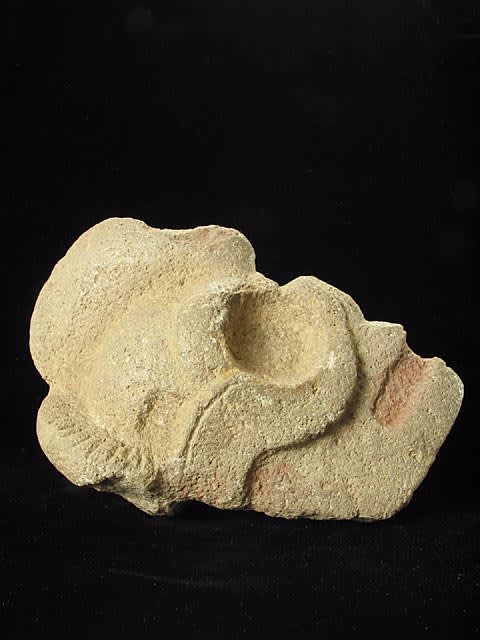Veracruz Volcanic Stone Hacha, 500 CE - 800 CE
Stone
4.5 x 6.625
PF.6056
Further images
The ball game, perhaps ritually signifying the transit of the sun and moon between the celestial and terrestrial spheres, was an important event in Meso-American culture, considered necessary to maintain...
The ball game, perhaps ritually signifying the transit of the sun and moon between the celestial and terrestrial spheres, was an important event in Meso-American culture, considered necessary to maintain the cosmic cycle. The game was both a sport and a sacrificial ritual. Made out of heavy stone, the hacha was possibly used as an extra burden of weight to test the physical prowess of the player. In fact, relief sculptures and terracotta figures show axe-shaped objects attached to ball-players’ belts, which were used as deflectors and protectors. The game itself used a large rubber ball that could be hit by the elbows, knees or hips but could not be touched by the hands or feet. This is one of the earliest types of hachas that were characteristically larger and rounder than later flat, axe-shaped examples. Some scholars believe that the origin of hachas might be traced back to trophy heads as this early example implies. This magnificent hacha likely depicts the head of a man covered in a mask representing an avian deity with a large central crest crowning his head. However, the depth of the barren eye sockets, recalling those of a skull, imply that this might depict a mythological being or deity related to death. In addition, the high cheekbones and prominent brow convey a powerful expression befitting of such a mythological god. A few traces of red pigment are still visible, most noticeable on the mouth and crest. The beauty and intricate carving of this hacha reveals the ceremonial significance of the ball game in the daily lives of Ancient Meso-Americans.





